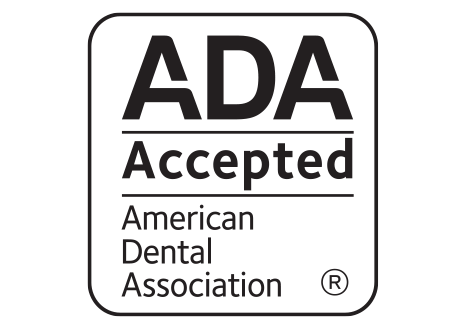
LISTERINE® ANTISEPTIC IS THE ONLY NATIONALLY BRANDED OTC ANTISEPTIC MOUTHWASH THAT HAS EARNED THE ADA SEAL OF ACCEPTANCE TO PREVENT AND REDUCE PLAQUE AND GINGIVITIS1*
The ADA Council on Scientific Affairs has adopted specific guidelines to earn the ADA Seal of Acceptance for the Chemotherapeutic Products for Control of Gingivitis category.1
2 independent 6-month clinical studies, utilizing a placebo control, showing significant reduction in gingivitis for the test product vs the control2,3
Data showing that plaque bacteria do not become resistant to the test product4
Data showing that test product does not allow pathogenic or opportunistic plaque bacteria to flourish4
Data showing that oral soft tissues and teeth are not harmed4
Toxicology and mutagenicity studies to assess possible adverse effects at the cellular level4
The ADA sets high standards—including two 6-month studies showing a minimum 15% reduction in gingivitis and a mean of no less than 20% across the two studies—before awarding the seal.
The LISTERINE® Brand is proud to reach these rigorous and thorough standards set by the ADA. Additionally, the ADA has accepted LISTERINE® TOTAL CARE, LISTERINE® TOTAL CARE ZERO and LISTERINE® SMART RINSE® into its group of fluoride products permitted to bear the ADA seal.
*The ADA Council on Scientific Affairs’ Acceptance of LISTERINE® Antiseptic is based on its finding that the product is effective in helping to prevent or reduce gingivitis and plaque above the gumline, when used as directed.
References: 1. American Dental Association. ADA seal product report: Listerine® antiseptic. ADA Web site. Accessed May 9, 2014. 2. Lamster IB, Alfano MC, Seiger MC, Gordon JM. The effect of LISTERINE® Antiseptic on reduction of existing plaque and gingivitis. Clin Prev Dent. 1983;5:12-16. 3. Minah GE, DePaola LG, Overholser CD, et al. Effects of 6 months use of an antiseptic mouthrinse on supragingival dental plaque microflora. J Clin Periodontol. 1989;16:347-352. 4. Data on file, Johnson & Johnson Consumer Inc.
